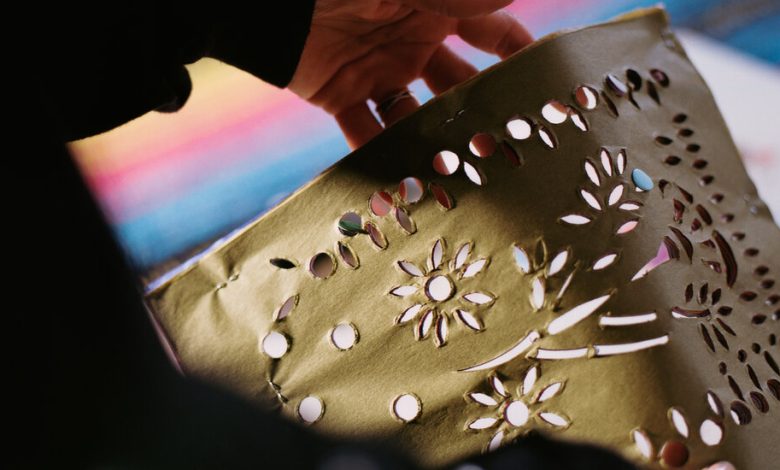With Brute Force and Steel, This Artist Creates Works of Ephemeral Beauty

Art of Craft is a series about craftspeople whose work rises to the level of art.
On a summer day in 2018, Blanka Amezkua arrived in San Salvador Huixcolotla. The southeastern Mexican town is best known as the birthplace of papel picado — intricately cut, colorful tissue-paper banners popular at Mexican festivities — and Amezkua had come hoping to learn the centuries-old techniques for crafting it. She flagged down a cab and asked the driver if he happened to know anyone who made the delicate paper flags. The man took her to his brother Don Rene Mendoza, who, by sheer chance, was a master of the trade. After speaking with Amezkua for more than five hours, Mendoza agreed to pass the craft tradition on to her.
Papel picado (“punched paper” in Spanish) has its roots in pre-Columbian times, when the Indigenous Nahuatl people of Mexico made amate paper from the bark of mulberry and fig trees, said Marcelo Alejandro Ramirez Garcia-Rojas, the curator of the International Museum of Art and Science in McAllen, Texas. Beginning in the 1500s, he said, “Spanish missionaries became deeply familiar with pre-Columbian traditions in an effort to combat them and convert local populations,” and practices such as amate production were discouraged or even banned. The Spanish also began importing papel chino — thin, tissue-like paper from China, often used to wrap other goods.
This confluence led to the creation of the papel picado used today to decorate a variety of celebrations in Mexican culture, most notably Day of the Dead, when it is placed around altars of deceased loved ones. The movement of the paper is said to signal the presence of the dead, and the delicate material symbolizes the ephemerality of life.

Blanka Amezkua at her home in the South Bronx.
Day of the Dead “is my favorite holiday,” said Amezkua, 53, who identifies as Chicana. Born in Mexico, she migrated to California with her parents when she was 5 and then returned to Mexico at age 10, spending much of her adolescence living with her grandparents and many aunts in Cuernavaca, a city about a four-hour drive west of San Salvador Huixcolotla. (Her parents remained in California, where they worked on cotton farms.) On Saturdays, Amezkua would evade chores by accompanying her grandfather to the local market. While he bought food for the week, Amezkua would peruse the labyrinth of vendors selling fruits, textiles or used jars.
Amezkua went on to study painting at California State University, Fresno, but she credits the market with teaching her “all the lessons of installation art.” Holiday decorations and seasonal produce meant “the way the market gets dressed” changed dramatically over the course of a year, and many of the items sold were previously owned. Amezkua’s fascination with repurposed materials is reflected across her multidisciplinary work, which ranges from embroidered tortilla towels to performance art.



